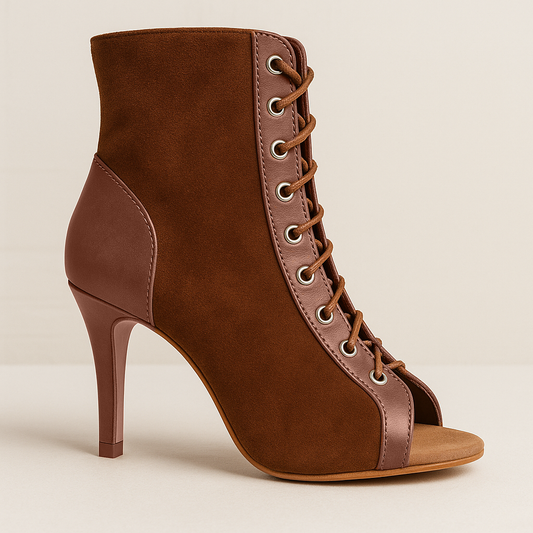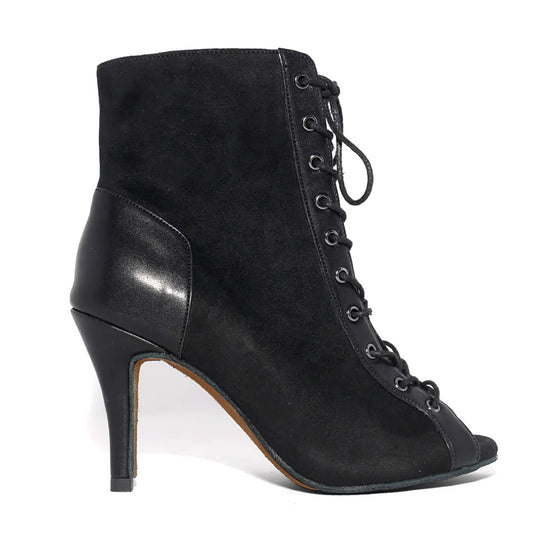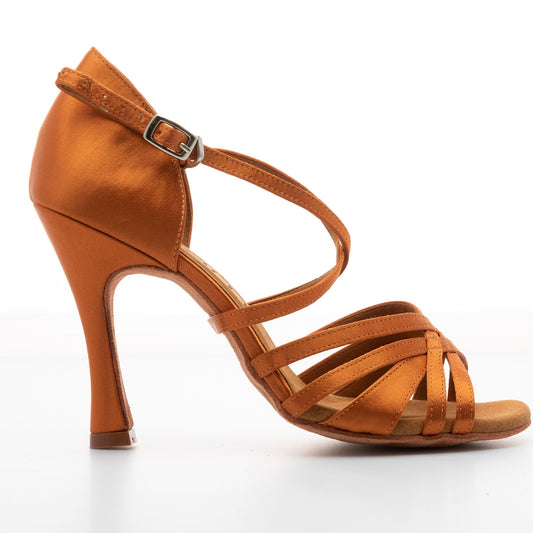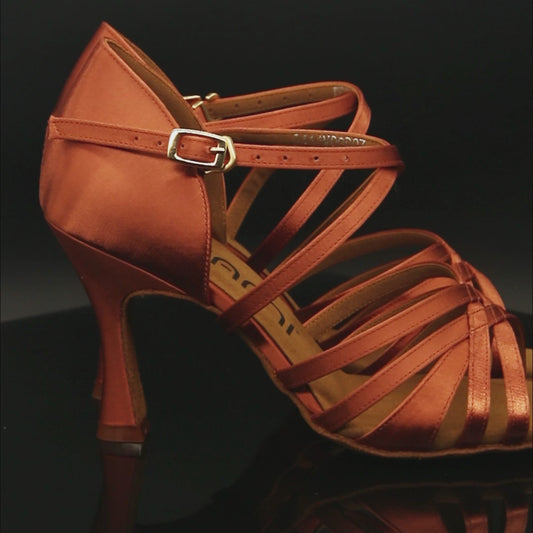
Photo Credits: Junckers | Jack K Hou | Hudson Loft | Wilton Carpets
It’s not just the dance shoes that affects a dancer’s performance. Factors such as the dance floor conditions could make or break a performance too! You see, not all dance shoes will work on all dance floors.
Dance floors are a dirt magnet - attracting dust, grime, and/or sticky residues that could affect the way you move on the dance floor and in some cases, increase the risk of injuries. Even a good pair of dance shoes are no match for an overly sticky or slippery dance floor. You have to learn how to adapt to different dance floors for a flawless performance. That’s what this guide is all about. Let’s take a look at the different dance floor situations and the many ways to overcome the odds:
Slippery Dance Floor
Social dance events and dance venues attract hordes of people so the dance floor has to be cleaned and waxed after every event. This makes the dance floor extra slippery. It's hard to move when you're walking on a freshly waxed floor much more dance on it, you could slip and fall. So what can you do?
The key here is to add friction between the soles of your dance shoes and the dance floor. Try these hacks:
Shoe Brush: A shoe brush has stiff, sharp bristles that lift the nap of dance shoe soles. If you've been wearing the same pair of dance shoes for a while, give the soles a good brush to refresh the nap of the soles, which might've been compressed. With a shoe brush, brush the soles of the shoe starting in the middle going in an outwards direction. Brush from the toe to the heel in one direction. Once the nap has fluffed up, the shoes will have more grip, allowing you to dance on slippery floors.
Hair Spray: This is one hack that's popular among professional dancers, hairspray! Hairspray is quite sticky so spritzing a little of the product on the soles of your dance shoes should create some traction on slippery dance floors. After spritzing with hairspray, give the soles a good brushing to spread the product all over and fluff the nap. Using hairspray is just a temporary fix, something that you should only do in a pinch. If you don’t have hairspray on hand, try castor oil as an alternative.
Water: Another tip that could work in a pinch, dabbing a little amount of water on your soles should give the shoes some traction on slippery floors. But again, don’t do this often and never go overboard with the H2O otherwise, you might end up ruining your dance shoes. Try this trick only when you truly have no other choice.
Sticky Floor
Some dance floors are sticky for many reasons, there could be leftover grime or soapy residues on the floor surface. When the floor is sticky, it's hard to twist, turn, or spin so there is a risk of injuries when dancing on a less smooth surface. You could twist your ankle or trip in the process. If the dance floor is sticky, try these hacks:
Foot Socks: To dance on sticky floors, you have to give your soles enough traction. If you are dancing on sticky linoleum or wood floors, try slipping a foot sock or foot liners over the shoes. The foot sock should only cover the toes part and heel of the shoes. The fabric material creates a smoother surface so you can dance while also protecting the shoes from spills and grime that could accumulate when dancing on dirty or freshly waxed dance floors.
Tape: Yes, tape. Masking tape, duct tape, packing tape, even double-sided tape could work in a pinch. Stick the tape on your shoe soles, particularly on the spot where the ball of your foot always rests. The tape lets you slide on a sticky dance floor without slipping. The caveat is that the tape leaves a sticky residue on the shoes. Try brushing off the sticky residue gently with a soft brush. Also, don’t try this trick often because the tape might end up ruining the soles of the shoes.
Powder: Talcum powder, baby powder, or cornstarch could also give your shoes a nice slip on sticky dance floors. Just pour a little amount in a corner, step on it to give the shoes a nice, even coating, and then head to the dance floor. Do note, however, that putting powder of any kind on dance shoes aren’t allowed in some venues. Ask the organizers if this is allowed before trying this hack.
More Tips: Adapting to Different Dance Floors
Adjusting the Way You Dance
If none of the tips that we have outlined above works for you, you’d have to make adjustments yourself starting with the way you dance. The goal is to minimize the strain on the ankles and knees to prevent injuries.
On Slippery Floors
If you are dancing on slippery floors, it's best to take smaller steps so you don't slip and break your hips! Be mindful of the way you take each step, making sure to put your weight evenly as you take a step. The key here is to really dig your shoes onto the floor so each step is balanced and steady. Keep your knees at a slight bend to shift your center of gravity to the lower part of the body. This trick gives you stability so you are steadier on your feet.
On Sticky Floors
If you are stuck dancing on a sticky floor, try to minimize pivoting so you don't end up straining your knees. A great tip would be to step up and place your feet on a new spot rather than twisting your ankles to pivot. Quick turns tend to put a lot of pressure on the knees and your weight could become unbearable if you are pivoting more and more on a sticky dance floor.
If you're leading, hold back on the spins and turns if the floor is sticky. It will be harder for your partner to keep up if the floor condition is sticky. Finally, take frequent breaks to give your knees a break. Sticky floors are quite brutal on the knees so taking breaks in between songs minimizes knee strain.
Wearing the Right Shoes
If you are a professional dancer or you are an active social dancer, invest in shoes that could either work on slippery or sticky floors or both. If you have a pair of dance shoes that work best on a slippery floor, for example, bring this together with the other pair of shoes you have for sticky floors. This way, you’re always ready to dance no matter the dance floor conditions.
Investing in the right dance shoes is instrumental to your performance, especially if the floor situation is less than ideal. High-quality dance shoes like Yami dance shoes are crafted with materials that suit most dance floors.
Sure, high-quality dance shoes are pricier than mass-produced, cheap alternatives but you will love the quality, performance, and longevity of the shoes! Of course, don’t take our word for it. Try it for yourself and feel the Yami difference.
References
https://salsafeet.wordpress.com/2017/12/28/cutting-a-rug-how-to-adapt-to-different-dance-floors/
http://www.azucarottawa.com/dancing-on-bad-floors/
https://salsa4life.com/salsa-dancing/adapt-to-your-dance-floor/
https://www.stagestep.com/maintenance-guide/








